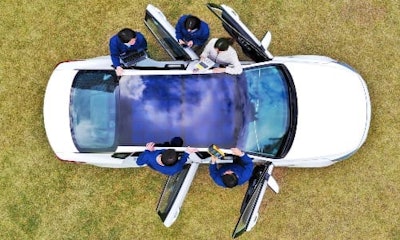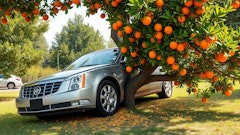
By CRM staff
Toronto, Ontario — November 6, 2018 — New technology for vehicles is evolving all the time to help prevent accidents, but also to benefit the environment. Hyundai Motor and Kia Motors plans to introduce solar charging technology on some Hyundai Motor Group vehicles starting next year.
Electricity-generating solar panels will be put into the roof or the hood of vehicles and will support hybrid and battery electric vehicles with additional electrical power, that will ultimately increase the fuel efficiency and range.
The solar charging technology will be able to charge batteries for not just hybrid or EV’s but also internal combustion engine vehicles. This will ultimately contribute to the increase in vehicle exports, by enabling vehicles to adhere to global-scale environmental laws that regulate CO2 emissions.
“In the future, various types of electricity generating technologies, including the solar charging system, will be connected to vehicles. This will enable them to develop from a passive device that consumes energy to a solution that actively generates energy,” said Jeong-Gil Park, executive vice president of Engineering Design Division of Hyundai Motor Group., who has developed this technology.
With this plan, Hyundai Motor Group is developing three types of different solar roof charging systems: The first-generation silicon solar roof system, the second-generation semi-transparent solar roof system, and the third-generation lightweight solar-lid on the vehicle’s body.
The first-generation solar roof system, which will be applied to hybrid models, includes a structure of mass-produced silicon solar panels that are mounted on the roof of the vehicle. This system can charge 30 to 60 percent of the battery per day, depending on the weather condition and the environment. This generation of technology for vehicles is set to launch after 2019.
For the first time in the world, the second-generation semi-transparent solar roof system will be applied to the vehicles with internal combustion engines. Different from the first-generation system, the second-generation provides transmissive panel options, satisfying consumers who desire a sense of openness. The semi-transparent solar panels are applied to a panoramic sunroof, maintaining transparency whilst charging an electric vehicle’s battery or an additional battery mounted on an internal combustion engine vehicle.
The third-generation lightweight solar-lid system, currently in the process of pilot study for applying to eco-friendly vehicle models, includes a structure that mounts solar panels on a bonnet and roof combined, in order to maximize energy output.






















